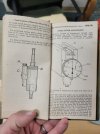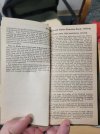Here's a PDF of a manual for the JR and JS series. Lots of useful info in there:
And here's another instruction manual for older testers.
Just a couple quick notes off the top of my head: heavily used or even slightly damaged brales (diamond points) aren't going to read accurately. There are also different brales for different scales, so make sure you're using one for the "C" scale.
Temperature can affect accuracy. Make sure the machine is not too hot or cold.
Make sure the machine is clean, especially around the indicator stem. When I bought might, it was all gunked up and dusty and the needle was moving very slowly and erratically. You don't necessarily want to oil the stem or completely disassemble everything, but just check it out for any dust or gunk that might keep it from traveling freely.
I normally load/unload my machine a few times just to "warm it up" and get everything moving. (without any test blocks or blades under the brale.) Just make sure the brale doesn't hit the anvil. This probably isn't necessary, but just something I do.
Also, make sure your anvil is completely clean of dust and grime (above and below), as this can affect readings too. You also want to make sure that the surface contacting the anvil face is flat and clean (and doesn't have any dents or burrs from previous tests that area proud of the surface). Tests spots shouldn't be too close together either. Around 4 or 5 point diameters is a typical spacing, if I recall.
If your testing a heat treated blade, make sure the blade is clean and free of any scale/oxidation.
I will also add that I've found that I'll occasionally get closer results if I do a second test in the exact same spot, without touching anything but my load/unload lever. I know this isn't proper technique, but I get very consistent results on my test block this way. YMMV.



